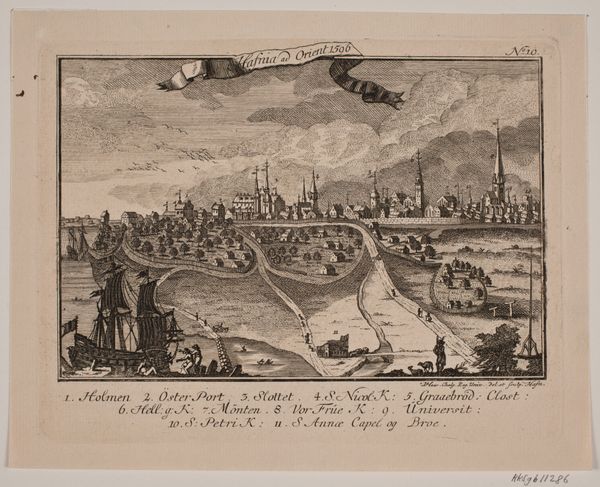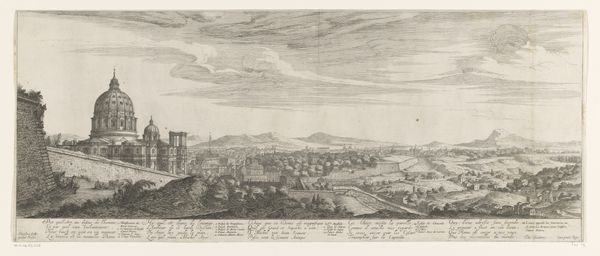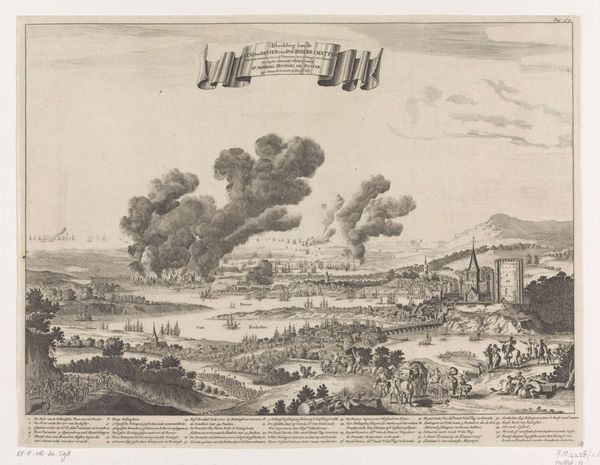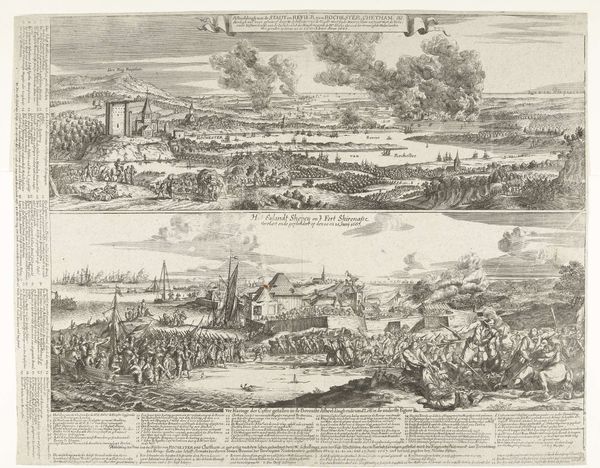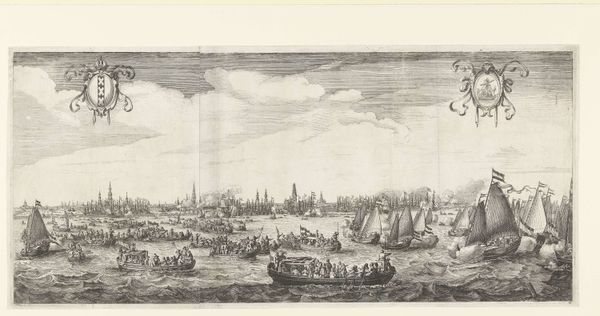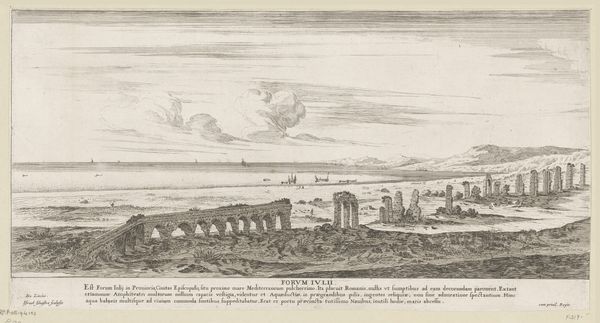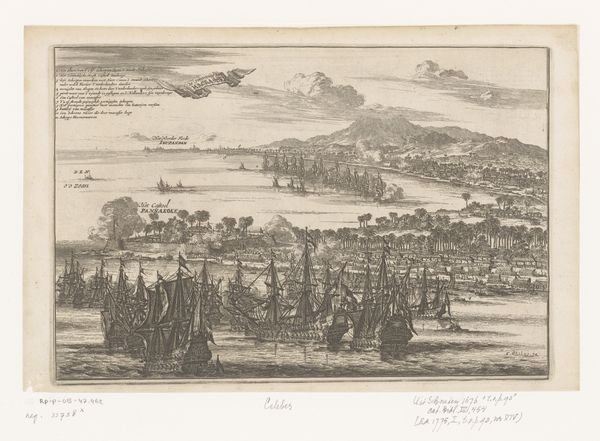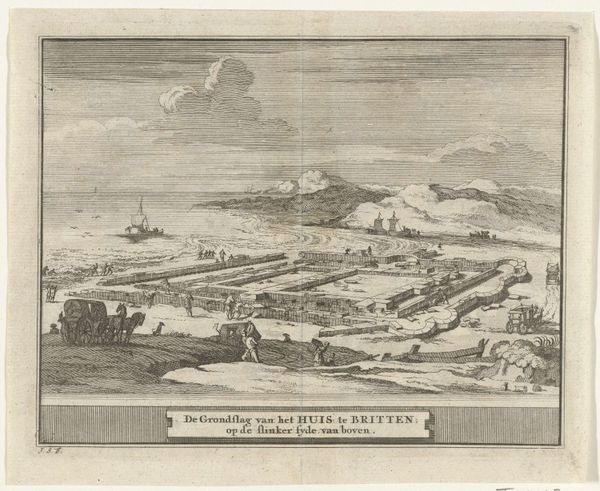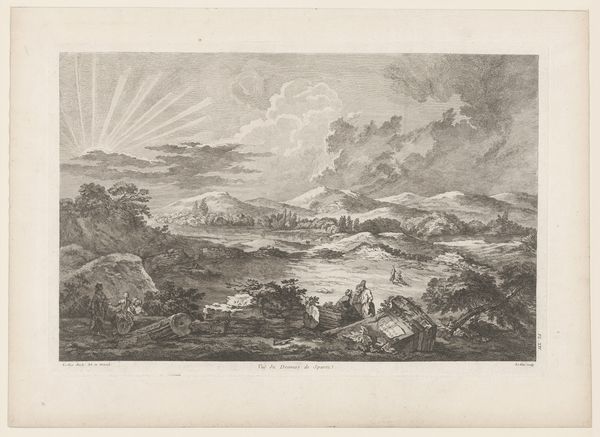
print, engraving
#
baroque
# print
#
old engraving style
#
landscape
#
charcoal drawing
#
pencil drawing
#
ancient-mediterranean
#
history-painting
#
engraving
Dimensions: height 311 mm, width 601 mm
Copyright: Rijks Museum: Open Domain
Editor: This print, “View of the Ruins of Persepolis” from 1739, really captures a sense of desolate grandeur. The artist is anonymous, but they've created this sprawling landscape using engraving. What do you see in this depiction? Curator: What strikes me is the layered symbolism. The ruins, meticulously rendered, represent a lost civilization, a powerful empire brought to its knees. Notice how the figures in the foreground are dwarfed by the scale of the remnants; the visual language tells a story of time's relentless march. But even in ruin, the columns still stand. What emotional quality does that evoke for you? Editor: A sense of melancholy, I guess, but also resilience. That the pillars are still somewhat visible feels very evocative. Curator: Exactly! That juxtaposition is key. The columns function almost like memories, still visible, shaping how we view ourselves within a landscape of forgotten glory. Consider the act of depicting these ruins: is it purely historical documentation, or could there be an element of colonial gazing too? Who do you think would be interested in seeing the representation? Editor: I hadn’t thought about that. Probably Europeans interested in understanding empires. It really shows how complex the act of image making is, especially relating to lost civilizations and current powers. Curator: Precisely. This piece acts as a mirror, reflecting not just Persepolis, but also the viewer and the forces at play when they consume the image. Editor: I’ll never look at a historical landscape print the same way again. Thank you! Curator: My pleasure! Art invites us to explore beyond the surface and examine the echoes of the past.
Comments
No comments
Be the first to comment and join the conversation on the ultimate creative platform.
